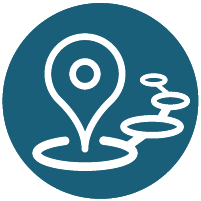K-8 Data Artists Collect, Create, and Analyze Their World!
,
HBGCC - Posters, Table 9
Session description
Outline
The main focal points of my poster session will be:
1. Focusing on how data science is introduced at different elementary and middle school grade levels and what that might look like with concrete examples of activities.
2. Explaining how students go from gathering data to analyzing it, with attention to how students can use data to draw specific conclusions.
3. Showing students'visual representations made using data and combining it with physical art.
We will speak with each attendee, but they will also have access to QR codes that lead to students'
projects/reflections, and some of our classroom materials (handouts).
Supporting research
Boaler,J. (2015). Mathematical mindsets [EPUB].Jossey Bass Wiley.
Boaler,Jo. (2022). Seeing Is Achieving: The Importance of Fingers,Touch, and Visual Thinking to Mathematics
Learners. 10.7551/mitpress/13593.003.0015.
LaMar,Tanya & Boaler,Jo. (2021).The importance and emergence of K-12 data science. Phi Delta Kappan. 103.49-53. 10.1177/00317217211043627.
Murphy Paul, Annie.“The Coding Revolution.” Scientific American Aug. 2016:42-49. Online and Print.
Rondinelli, Bille, Dr., and Aileen M. Owens. “Computational Thinking.” AASA May 2017: 23-27. Print and Online.
Presenters


Session specifications
Topic:
Grade level:
Audience:
Attendee devices:
Subject area:
ISTE Standards:
Knowledge Constructor
- Use effective research strategies to find resources that support their learning needs, personal interests and creative pursuits.
- Collect data or identify relevant data sets, use digital tools to analyze them, and represent data in various ways to facilitate problem-solving and decision-making.
- Use digital tools to visually communicate complex ideas to others.

 Back
Back Trips and Tours
Trips and Tours